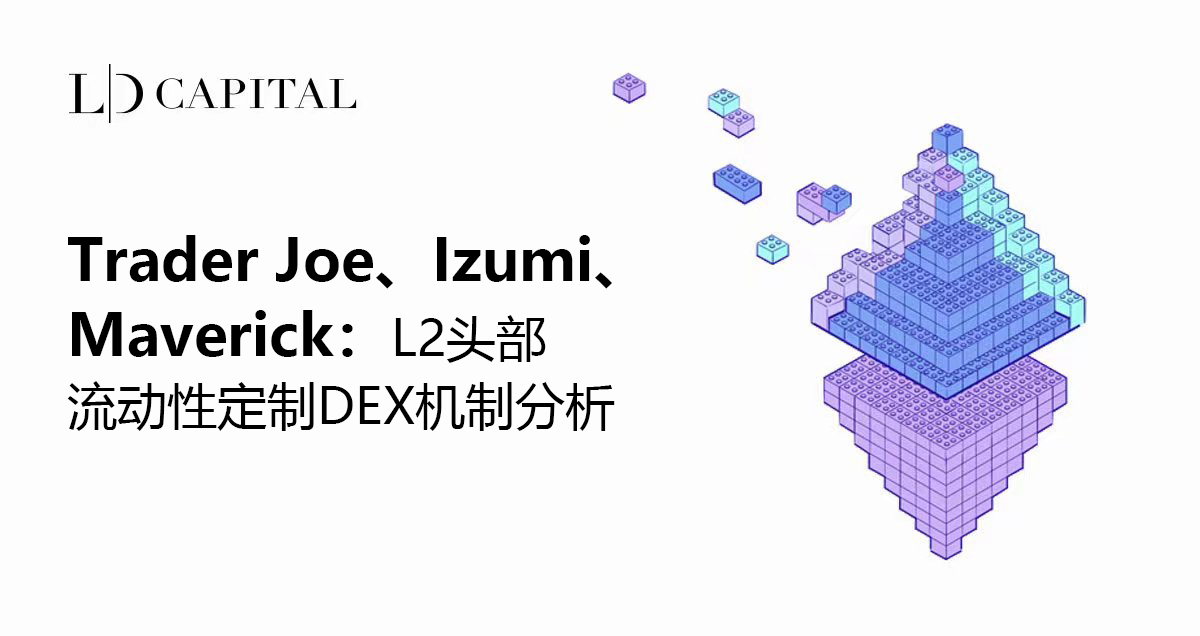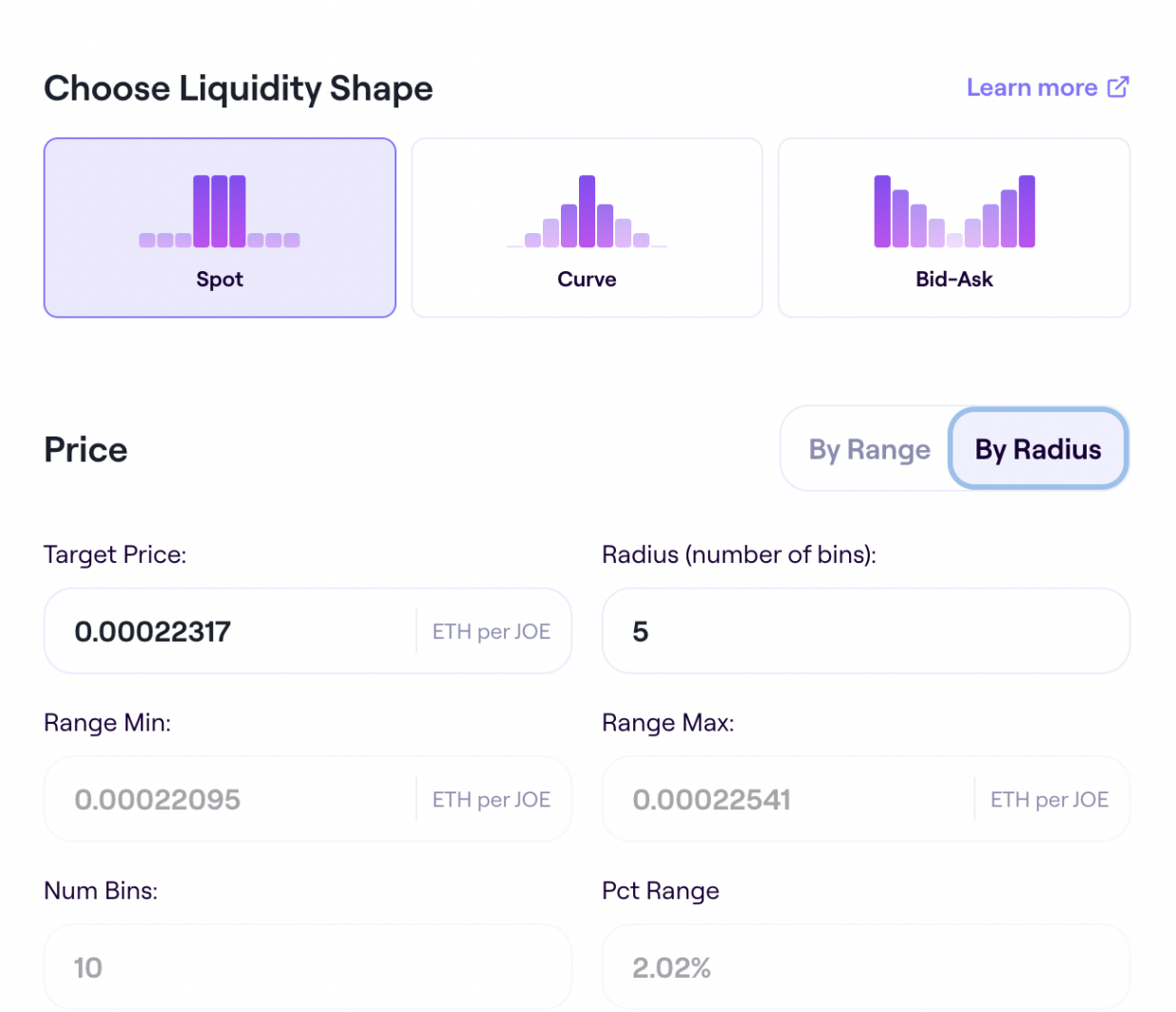
Original author: Yilan, LD Capital
foreword
Original author: Yilan, LD Capital
foreword
With the expiration of the Uniswap V3 license, many centralized liquidity AMM (CLMM) forks began to emerge. "Uni v3-Fi" includes Dex (simple fork V3 or a different strategy model that customizes the pricing range based on V3), revenue enhancement protocol (Gammaswap), Option class and other protocols to solve the impermanent loss of V3, etc. , this article mainly introduces Dex —— Trader Joe v2, Izumi Finance and Maverick Protocol, which have optimized the pricing range on the basis of V3.
Problems with Uni V3
In Uniswap V3, liquidity is concentrated within a specific price range. This means that if the price of an asset deviates from this range, the so-called "impermanent loss" (IL, Impermanent Loss) will occur. The impermanent loss refers to the loss suffered by the liquidity provider in the AMM relative to the assets held. When the price deviates from the price range selected by the liquidity provider, the impermanent loss may increase significantly, even exceeding the loss of the original asset.
The IL risk caused by the centralized liquidity of Uni v3 is greater. This part of the explanation involves the gamma in the option Greek letter concept. Gamma is the rate of change of the price change of the indicator relative to the Delta value. When Gamma is large, it means that Delta is very sensitive to changes in the underlying price, so it is necessary to adjust positions in time to avoid potential losses, which is called Gamma risk. Without considering the time factor, it can be said that when the volatility of the underlying asset increases, the price of the option will also increase accordingly, because the higher volatility increases the probability of the option realizing the return, so the market favors such an option Ask for a higher price.
When the asset volatility is high, the gamma risk is higher, and the impermanent loss suffered by LPs is also greater, so the required compensation for impermanent loss is also more. Therefore, AMM can be regarded as an embedded perpetual option market, while LP is exposed to gamma risk and bears the risk of impermanent loss to obtain transaction fees or mining income.
To meet this challenge, liquidity providers need to closely monitor the prices of the assets they provide, and take timely actions such as withdrawing liquidity and reallocating funds to new price ranges to mitigate the impact of impermanent losses. However, this process is time-consuming and requires gas costs, and there is a risk of setting the wrong price range.
In addition, Uniswap V3 also faces some other problems. For example, the concentration of liquidity within a specific price range may lead to fragmentation of liquidity, increasing transaction costs. In addition, liquidity providers need to be adjusted and managed frequently due to frequent asset price changes, which can be challenging for large-scale and frequently traded LPs.
Trader Joe v2
Therefore, although Uniswap V3 can provide higher fees and annualized rate of return, liquidity providers need to weigh these potential challenges and risks. The solutions to the problems of Uniswap V3 can be divided into the following categories: optimization of impermanent loss, tool optimization of LP’s best market-making plan (that is, providing diverse options for adding liquidity to different risk appetites) tools), as well as built-in optimization strategies for LP NFT revenue enhancement, etc.
This article mainly analyzes three DEX projects that optimize the LP market-making scheme: Trader Joe, Izumi, and Maverick.
The biggest improvement of Trader Joe V2's LB (Liquidity Book) over Uniswap V3 is to introduce the concept of "Bin" and make the liquidity distribution strategic. "Bin" is a price range as a unit of liquidity distribution. In Liquidity Book, liquidity is divided into discrete "Bin" units. Liquidity within each bin is converted at a fixed exchange rate. Allows liquidity providers to pool funds within a specific price range, thereby avoiding slippage. This means that transactions within this price range can be executed with zero slippage, improving the efficiency and cost-effectiveness of transactions. Liquidity distribution can be strategized, which means that LB Token’s semi-homogeneous properties and vertical liquidity distribution direction enable LP to deploy its own liquidity according to a certain strategy, not just distribute it evenly on the bin.

The Auto Pool for Trader Joe v2.1 began deployment in June, and The General is the first Auto-Pool to be deployed on AVAX-USDC (Avalanche) and ETH-USDC (Arbitrum). The General automatically rebalances liquidity positions to maximize fee income; and reacts to market trends and asset imbalances, making it adaptable to most markets and environments. In the future, The General will also be used for other liquidity pools.
Izumi Finance
Auto-Pool will accumulate a share of transaction fees charged by the liquidity pool. Tokens can be deposited into yield farms (future release). Auto-Pool can provide incentives through partner tokens (future release). An automation fee is charged for each rebalance, equivalent to an annualized rate of 4.5%. Automation fees are used to cover operational costs, such as gas costs when rebalancing. In the future, automation fees may be distributed to sJOE stakers.
Deploy in different liquidity distribution strategies. If the strategy judgment is more accurate, that is, the proportion of liquidity falling in the selection range is more, LP will get more rewards. In addition, dynamic swap fees allow LPs to charge different fees according to market volatility, thereby better managing risks and returns.
Izumi's AMM uses the DL-AMM algorithm, a new discrete centralized liquidity algorithm, which has the characteristics of a centralized liquidity market maker similar to Uniswap V3, but can accurately distribute liquidity at any fixed price, instead of a single price range. This makes iZiSwap more controllable in liquidity management and supports more trading methods, such as limit orders.
Besides Swap, Liquidbox is also one of the core products of Izumi Finance. LiquidBox is a liquidity mining solution based on Uniswap V3 NFT LP tokens. It attracts liquidity through different liquidity incentive models, allowing the project side to set up trading pairs and liquidity pools more efficiently, and to set up trading pairs and liquidity pools in different price ranges. There are different rewards available.
These liquidity reward models include:
1) Concentrated liquidity mining model (Concentrated liquidity mining model), generally compared with the xy=k model, the capital efficiency of a specific interval is more than 50 times higher, and concentrated liquidity usually increases the impermanent loss of non-stable currency pairs, Stablecoins have a limited fluctuation range and are more friendly to stablecoin pairs.
2) One-sided non-impermanent loss mining model (One-sided non-impermanent loss mining model), the specific operation is, when LP deposits 3000 USDC and 3 ETH, izumi will pass the price on Uniswap V3 (0, 3) 3000 USDC is placed in the range for management, and when the price of XYZ falls, USDC is used to form a purchase order. 3 ETH are placed in the izumi pledge module to lock liquidity (the pledge part is not in Uniswap V3), and will not be passively sold when the price of ETH rises, so that it will not cause impermanent losses or passive selling pressure on the project side.
3) Dynamic Range model, the project aims to motivate liquidity providers to provide effective liquidity around the current price.
Maverick Protocol
When a user mortgages Uniswap V3 LP tokens to the Izumi protocol for Farming, LiquidBox will automatically determine whether the value range of LP tokens is within the liquidity incentive range set by the project owner, which is set to ensure liquidity Liquidity providers provide liquidity at a desired price range.
This is a strategy to create more income for Uniswap v3 LP, and it is also similar to providing the project party with a bribery method to help the project token create liquidity. At the same time, the group that deposits in LP NFT can manage the liquidity position through the functions of fixed range, dynamic range, and one sided based on their own judgment of the underlying market trend, and can avoid IL when choosing the right one.
The automatic liquidity placement (ALP) mechanism of Maverick AMM is similar to Uniswap V3, but the important difference is that the ALP mechanism can automatically realize the dynamic rebalancing of centralized liquidity, so that the transaction slippage is lower than that of the non-centralized AMM model, but the impermanent loss and Lower than the centralized AMM model (one-sided liquidity mechanism reduces impermanent loss scenarios).
Its key mechanism is to manage liquidity through the use of "Bin". "Bin" refers to the smallest available range of prices. In Maverick, LPs can choose to have their liquidity added to specific bins. LPs can choose four different modes: Right mode, Left mode, Both mode and Static mode to determine how their liquidity changes with price.
In Maverick, when the price changes, the non-static (non-static) bins can move to the right or left according to the price change. When a bin moves to a position where it overlaps with another bin of the same type, the two bins are merged and the merged bin gets the liquidity share of the two bins before the merge.
Summarize
When LPs want to remove liquidity from a bin, they can withdraw their share of that bin by providing the corresponding LP tokens. If the bin is a merged bin, LPs need to do a recursive calculation, pass their withdrawal request to the active bin in the merged chain, and withdraw assets proportionally from the merged bin's liquidity share.
Summarize
Trader joe v2 and v2.1 achieve three things: 1) In-bin trading without slippage. 2) Liquidity Book introduces dynamic swap fee pricing, which will be applied to the swap amount in each bin and distributed to the liquidity providers in that bin in proportion. In this way, LP can use fees to hedge against impermanent losses in a high volatility market. From the perspective of AMM's built-in perpetual option market, such a setting is also reasonable, using the instantaneous price fluctuation function to price high volatility, that is, similar to the option premium in the option market to compensate the option seller (LP). 3) Auto pool automatically rebalances liquidity positions to maximize fee income. In the later stage, the Farming strategy similar to Izumi Liquidbox and the function of the project party to build a pool to stimulate liquidity will be introduced.DAOIzumi Finance has achieved the following three points: 1) Precise value range: LiquidBox allows project owners to explicitly set the value range for incentivizing LP tokens. This means that liquidity providers can more accurately understand the value range of the liquidity they provide, so as to better manage risks and obtain corresponding rewards. 2) Enhanced liquidity management: LiquidBox allows liquidity to be better concentrated at a specific price by setting a value range, not just within a price range. This enhanced liquidity management makes it easier for the izumi protocol to manage liquidity and supports more trading methods, such as limit orders. 3) Different liquidity reward models are good liquidity management tools for project parties.
Maverick adjusts the way liquidity moves with price by offering different models. As prices move, bins can move and merge to keep liquidity available. This mechanism enables LPs to better manage impermanent losses and obtain better returns in price changes. The bottom layer of AMM automatically moves centralized native liquidity, custom centralized liquidity movement direction, automatic compound interest of LP fees, and allows project parties to encourage specific price ranges. These functions make Maverick AMM a liquidity provider,
DeFi users such as treasury and project development teams provide the possibility of maximizing capital efficiency and the most accurate liquidity management tools.



